|
You're welcome, flux! You are not alone. Emotion plays heavily into trading. I used to be down right spastic when i was trading.
You just need to flip what you are feeling on it's head -- which is no easy thing to do and it took me years.
When you are taking a loss, you should be fearful that it will continue forever.
A lot of traders don't take losses because they're hoping the trade turns around. They say "Let's wait and see if this comes back and I'll get out at break even..." But that day may never come.
You should also play "wait and see" with your winners. Give it room to become a really big winner. you only need a few a year. Of course, some of your small winners may slide back to zero.
Always look at the chart. If the chart looks positive, stay in. Wait for the chart to tell you to get out.
Let's take one of this year's huge winners, PLUG. Let's say you bought one of the first breakouts:

The very next day you have a good gain, like this:
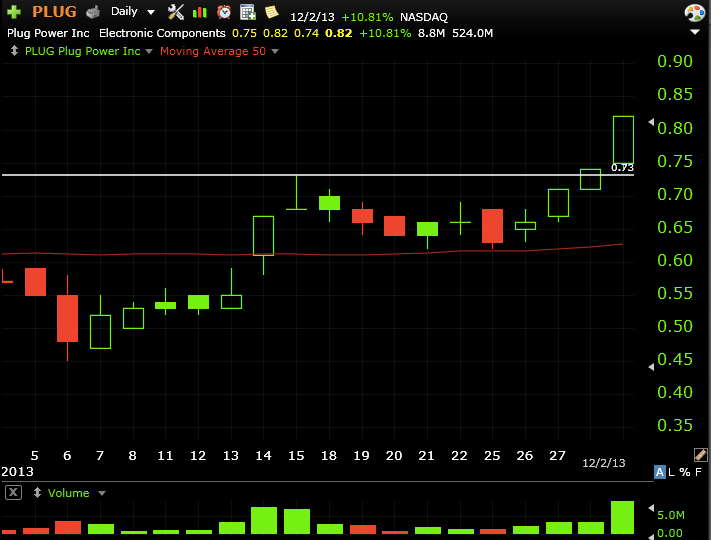
Up 10%. Nice! But now you're getting nervous. You want to lock in those gains. You can do a few things here and the choice is yours.
If you're happy with 10% -- grab it. Why not. But if this is your average gain you have to be much faster to take your losses. They should be around -3% on average.
Also, you have to be content with taking your 10% and then watching this run higher without you -- if that's what it does.
You could move your stop up under today's low as well. That would put you at break even if you want to give it room to grow.
The next day you get this:
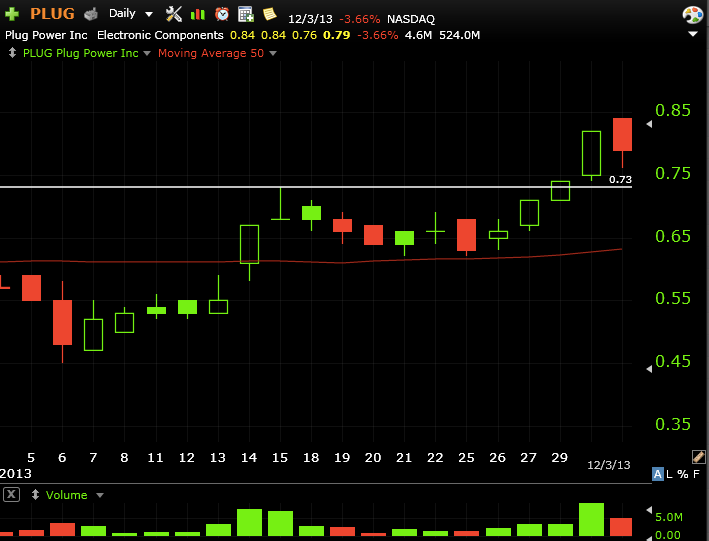
Ouch -- down -3% and you are really getting nervous. What if this is the start of a slide? What if it takes away all of your gains?
But you have to calm yourself down -- and look at where you are.
You broke out on volume -- this down move is on lower volume. And your stop has not been hit.
So you hold, and you "wait and see" in accordance with your plan. I give these 10-15% room to move based on volatility. But that comes with the very real possibility of them sliding back to break even.
But I know what I'm looking for -- I'm looking for the big move.
And the next day we are rewarded for trading it right --
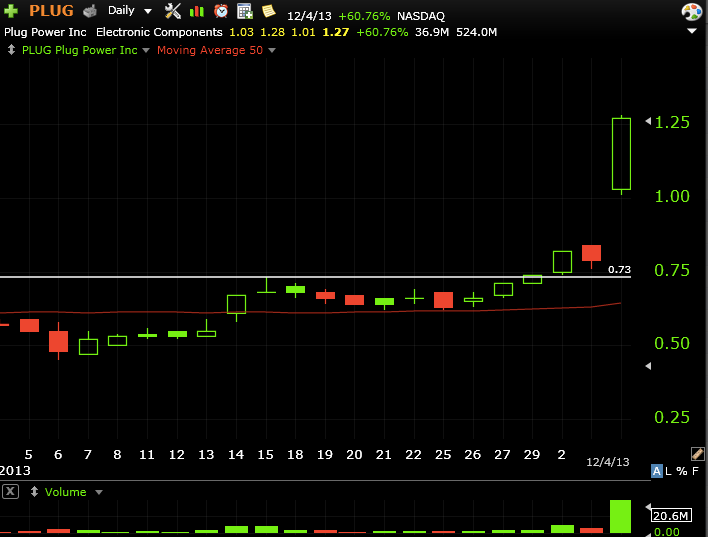
Wow -- a 60% move. On even greater volume. Here I would probably take some shares off. But I'd leave some on and play "wait and see" with this profit.
Notice how this is the opposite of how most play "wait and see" with losses?
Flip this chart around, pretend you are losing. How far would you let it go? Let's say we are perfect traders and we leave it open.
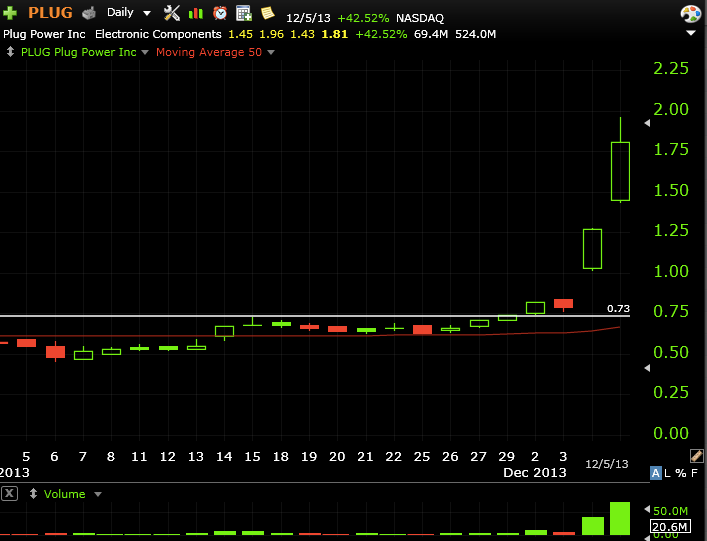
An even bigger gain! We are killing it. But look at the volume. It's rising still..
Do you want to wait and see again? Nervous now? really nervous? Take off some more of your position. Let's keep the rest open. See what happens.
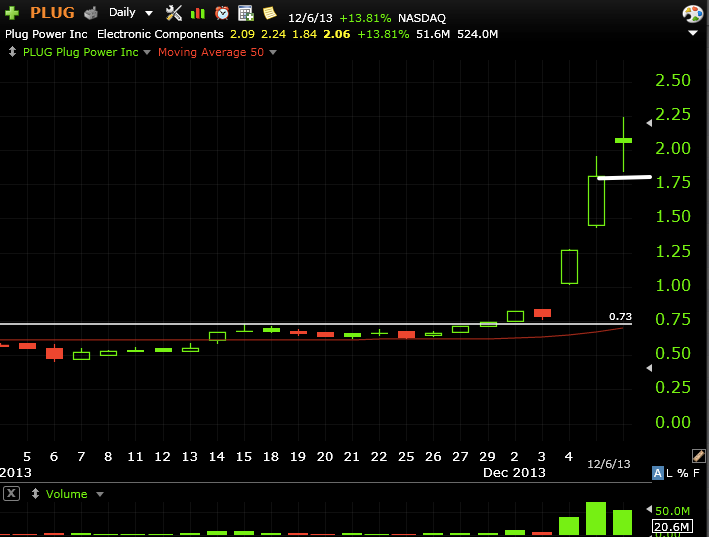
Up another 13% -- but this candle would make me think. The volume is dropping and we could be topping out. I'm looking for a 5 day move so I put my stop under today's low and see what happens.
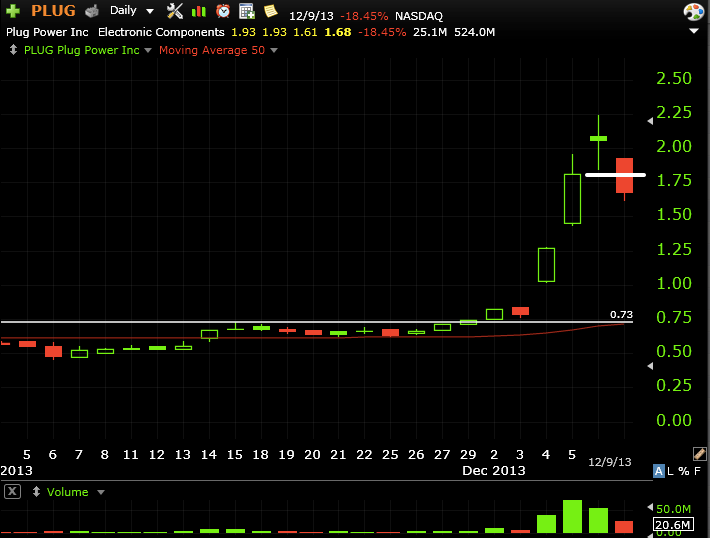
And the next day we are taken out -- but not after gaining over 100% on our trade.
And plug wasn't even done there. It went on to gain over 1,000 over the next few months.
Anyway, this was just an example of the ways I use the charts to manage my emotions.
It's not fool proof. I still have to work to manage my emotions. But it helps that i know what I'm looking for, I have a plan that I execute, and I know all of the stats for my system so I know what to expect.
Anyway, good luck to you, sir!
David John Hall.
|